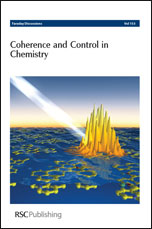Coherent control of vibrational transitions: Discriminating molecules in mixtures
Abstract
Identifying complex molecules often entails detection of multiple vibrational resonances, especially in the case of mixtures. Phase shaping of broadband pump and probe pulses allows for the coherent superposition of several resonances, such that specific molecules can be detected directly and with high selectivity. Our particular implementation of coherent anti-Stokes Raman scattering (
- This article is part of the themed collection: Coherence and Control in Chemistry

 Please wait while we load your content...
Please wait while we load your content...